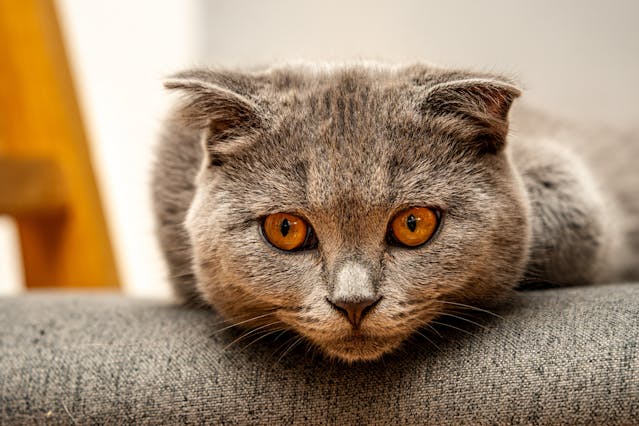Caring for a cat with chronic kidney disease can be daunting, especially when it comes to administering subcutaneous fluids. This essential guide offers practical steps, tips, and tricks to make the process easier for both you and your feline friend. Discover how to improve your cat’s hydration at home and enhance their quality of life. Gaining confidence in these techniques can alleviate your frustrations while providing the care your pet needs.
Understanding Chronic Kidney Disease in Cats
Chronic kidney disease (CKD) is a prevalent condition affecting many cats, particularly as they age. It progressively impairs kidney function, leading to a range of health issues. Understanding the symptoms and diagnosis process is crucial for early detection and management.
Sujet a lire : Top Positive Strategies to Keep Your Cat Off Furniture: No Negative Reinforcement Needed!
Impact on Cats
CKD significantly affects a cat’s quality of life. The kidneys lose their ability to filter waste effectively, resulting in toxin buildup. This can lead to weight loss, increased thirst, and lethargy. Early recognition of these signs allows for timely intervention.
Common Symptoms
Cat owners should be vigilant for the following symptoms:
A lire également : Is Your Cat Overweight? Discover How to Assess Their Weight and Create a Successful Weight Loss Journey!
- Increased drinking and urination
- Loss of appetite and weight
- Vomiting or diarrhea
- Bad breath with a chemical odor
- Poor coat condition
Veterinary Diagnosis
Diagnosing chronic kidney disease involves several steps. Veterinarians typically conduct a physical exam, review the cat’s medical history, and perform blood and urine tests. These tests help measure kidney function and detect abnormalities.
A quote from a veterinary expert: “Early diagnosis and treatment can significantly improve a cat’s prognosis with chronic kidney disease.”
By understanding the impact, recognizing symptoms, and seeking a prompt diagnosis, cat owners can better manage their pet’s health and well-being.
Importance of Subcutaneous Fluid Therapy
Subcutaneous fluid therapy plays a pivotal role in managing chronic kidney disease (CKD) in cats. This treatment involves the administration of fluids under the skin, providing essential hydration that supports kidney function.
Benefits of Subcutaneous Fluid Therapy
This therapy offers several benefits for cats with CKD. Primarily, it helps maintain hydration, which is crucial as the kidneys struggle to conserve water. Proper hydration can alleviate symptoms such as lethargy and poor coat condition.
- Improved Hydration: Ensures cats receive adequate fluids, compensating for increased urination.
- Enhanced Kidney Function: Supports the kidneys by flushing out toxins more effectively.
- Better Quality of Life: Reduces discomfort and improves energy levels.
Purpose and Contribution to Well-being
The primary purpose of subcutaneous fluid therapy is to support the failing kidneys and improve the cat’s overall well-being. By maintaining hydration, this therapy can slow the progression of CKD, giving cats a better quality of life.
A veterinary expert states, “Subcutaneous fluid therapy is a cornerstone in managing CKD, providing significant relief and prolonging the lives of affected cats.” By understanding and utilizing this treatment, cat owners can make informed decisions that positively impact their pet’s health.
Necessary Supplies for Administering Fluids
Understanding the essential supplies needed for at-home fluid administration is crucial for effective treatment.
Essential Supplies for Administration
Organizing your supplies ensures a smooth process. Here’s a concise list of what you’ll need:
- Fluids: Lactated Ringer’s solution is commonly recommended.
- Needles: Use sterile, single-use needles, typically 18-20 gauge.
- IV Set: A drip set to connect the fluid bag to the needle.
- Sharps Container: For safe disposal of used needles.
Choosing the Right Fluids and Equipment
Selecting the appropriate fluids and equipment is vital. Consult your veterinarian to determine the best fluid type for your cat’s condition. Ensure all equipment is compatible and sterile to prevent infection. The right supplies make administration more efficient and less stressful for both you and your cat.
Tips for Organizing Supplies
Keep your supplies in a dedicated area for easy access. Label each item clearly and check expiration dates regularly. Organize by frequency of use, placing the most used equipment within reach. This preparation simplifies the administration process, ensuring your cat receives consistent care.
Step-by-Step Guide to Administering Subcutaneous Fluids
Administering fluids to your cat can be straightforward with the right approach.
Preparing Your Cat and Environment
Creating a calm environment is essential for a successful administration technique. Choose a quiet space where your cat feels comfortable. Gather all your supplies in advance to minimize stress. Gently pet and soothe your cat to help them relax before beginning the process.
Step-by-Step Instructions
Following a clear process is crucial for effective fluid administration. Here’s a concise guide:
- Wash your hands thoroughly to maintain hygiene.
- Hang the fluid bag above your cat’s level to allow gravity to assist.
- Attach the IV set to the fluid bag and prime it by allowing a small amount of fluid to flow through the line.
- Insert a sterile needle into the IV set.
- Gently pinch the skin at the scruff of your cat’s neck to create a tent.
- Insert the needle into the base of the tent at a 45-degree angle.
- Open the clamp on the IV set to start the fluid flow.
- Monitor your cat’s response and adjust the flow as necessary.
Best Practices for a Smooth Process
To ensure a smooth and safe process, reward your cat with treats and affection post-administration. Consistent practice will make the technique easier over time, enhancing both your confidence and your cat’s comfort.
Making the Process Comfortable for Your Cat
Creating a stress-free environment for your cat during fluid administration is essential for their comfort and well-being.
Techniques to Reduce Stress
Cats are sensitive creatures, and minimizing stress is crucial. Choose a familiar, quiet space for the procedure. This helps in reducing anxiety and makes the process smoother. Speak softly and maintain a calm demeanor. Your cat’s comfort is paramount, and your presence can provide reassurance.
Using Treats and Rewards
Incorporating treats and rewards can transform the experience into a positive one. Before and after the procedure, offer your cat a favorite treat. This not only serves as a distraction but also associates the process with positive outcomes. A reward system encourages comfort and reduces stress over time.
Importance of a Calm Environment
A calm environment significantly affects your cat’s comfort. Ensure the area is free from loud noises and disruptions. Dim lighting and soothing music can further ease anxiety. Consistency in the setting helps your cat feel secure, making each session less stressful.
- Quiet Space: Reduces external stimuli
- Soft Voice: Provides reassurance
- Treats: Reinforce positive behavior
By focusing on these techniques, you can enhance your cat’s comfort and make fluid administration a more pleasant experience for both of you.
Common Mistakes to Avoid
Ensuring successful fluid administration for your cat involves careful attention to detail.
Frequent Errors in Fluid Administration
Administering subcutaneous fluids can be daunting, and mistakes are common. One frequent error is using the wrong needle size, which can cause discomfort. Another is failing to prime the IV set, leading to air bubbles entering the system. Misjudging the fluid amount can also occur, either overhydrating or underhydrating your cat.
Avoiding Complications
To avoid these complications, adhere strictly to veterinary guidance. Always consult your vet to confirm the correct needle size and fluid volume. Ensure the IV set is properly primed by allowing a small amount of fluid to flow through before insertion. Regularly check for air bubbles and remove them promptly.
Importance of Following Veterinary Guidance
Veterinary guidance is crucial in preventing complications. Your vet can provide tailored advice to suit your cat’s specific needs. This includes the ideal fluid type, administration frequency, and technique.
- Needle Size: Consult your vet for the appropriate gauge.
- Fluid Volume: Verify the correct amount with your vet.
- Priming: Ensure the IV set is free of air bubbles.
By avoiding these mistakes and following expert advice, you can ensure a safer, more effective fluid administration process for your cat.
Recognizing Potential Side Effects
Understanding potential reactions is crucial for effective monitoring.
Common Side Effects
After administering subcutaneous fluids, some side effects may arise. It’s essential to recognize these to ensure your cat’s well-being. Common reactions include slight swelling at the injection site, which typically resolves on its own. Additionally, some cats may experience temporary lethargy or mild discomfort.
Signs to Monitor
Monitoring your cat during and after treatment is vital. Be attentive to signs such as persistent swelling, unusual lethargy, or changes in behavior. If your cat shows signs of severe discomfort or distress, it may indicate a reaction to the fluids.
- Swelling: Observe if it subsides within a few hours.
- Lethargy: Temporary tiredness is normal, but prolonged lethargy requires attention.
- Behavior Changes: Note any significant shifts in activity or demeanor.
When to Contact a Veterinarian
Knowing when to seek veterinary advice is crucial. If side effects persist or worsen, contact your vet immediately. Persistent swelling, severe lethargy, or any signs of infection at the injection site warrant professional evaluation. A veterinary expert emphasizes, “Promptly addressing side effects can prevent complications and ensure effective treatment.” By staying vigilant, you can manage potential side effects effectively.
When to Seek Veterinary Assistance
Recognizing when to act is crucial for your cat’s well-being.
Emergency Situations
Immediate veterinary assistance is crucial in certain situations. If your cat experiences severe vomiting, extreme lethargy, or difficulty breathing, these are signs of distress requiring urgent care. Sudden changes in appetite or behavior may also indicate an emergency.
Signs of Distress
Determining if your cat is in distress involves observing their behavior closely. Look for persistent vomiting, refusal to eat, or unresponsiveness. Signs like excessive panting or hiding can also indicate discomfort. Recognizing these symptoms early can prevent further complications.
- Vomiting: Frequent and severe
- Lethargy: Extreme and persistent
- Breathing Difficulty: Rapid or labored
Importance of Regular Veterinary Check-Ups
Regular veterinary check-ups are vital for managing chronic kidney disease (CKD) effectively. These visits help monitor your cat’s health, adjust treatment plans, and address emerging issues. Consistent guidance from a veterinarian ensures your cat receives optimal care tailored to their condition.
A veterinary expert advises, “Routine check-ups are essential for early detection of complications, allowing for timely interventions.” By maintaining a proactive approach, you can enhance your cat’s quality of life and manage CKD more effectively.
Additional Resources for Ongoing Care and Support
Enhancing your knowledge and support network is crucial for managing CKD in cats.
Online Resources and Support Groups
Navigating chronic kidney disease (CKD) in cats can be challenging. Fortunately, numerous online resources and support groups exist to assist caregivers. These platforms offer a wealth of information, from expert advice to shared experiences. Engaging in forums allows you to connect with others facing similar challenges, providing emotional and practical support.
Recommended Books and Literature
Educating yourself through recommended books and literature on CKD can enhance your understanding and ability to care for your cat. Authors often share insights into disease management and innovative care strategies. Consider titles like “Caring for Your Cat with Kidney Disease” for comprehensive guidance.
Visual Guidance for Fluid Administration
Visual aids, such as videos or tutorials, can be invaluable in mastering fluid administration techniques. Watching these resources helps clarify procedures, making them less daunting. They offer step-by-step instructions, ensuring you administer fluids safely and effectively.
- Online Forums: Connect with other caregivers
- Educational Books: Deepen your knowledge
- Tutorial Videos: Enhance your practical skills
By leveraging these resources, you can provide better care for your cat and feel supported in your caregiving journey.











